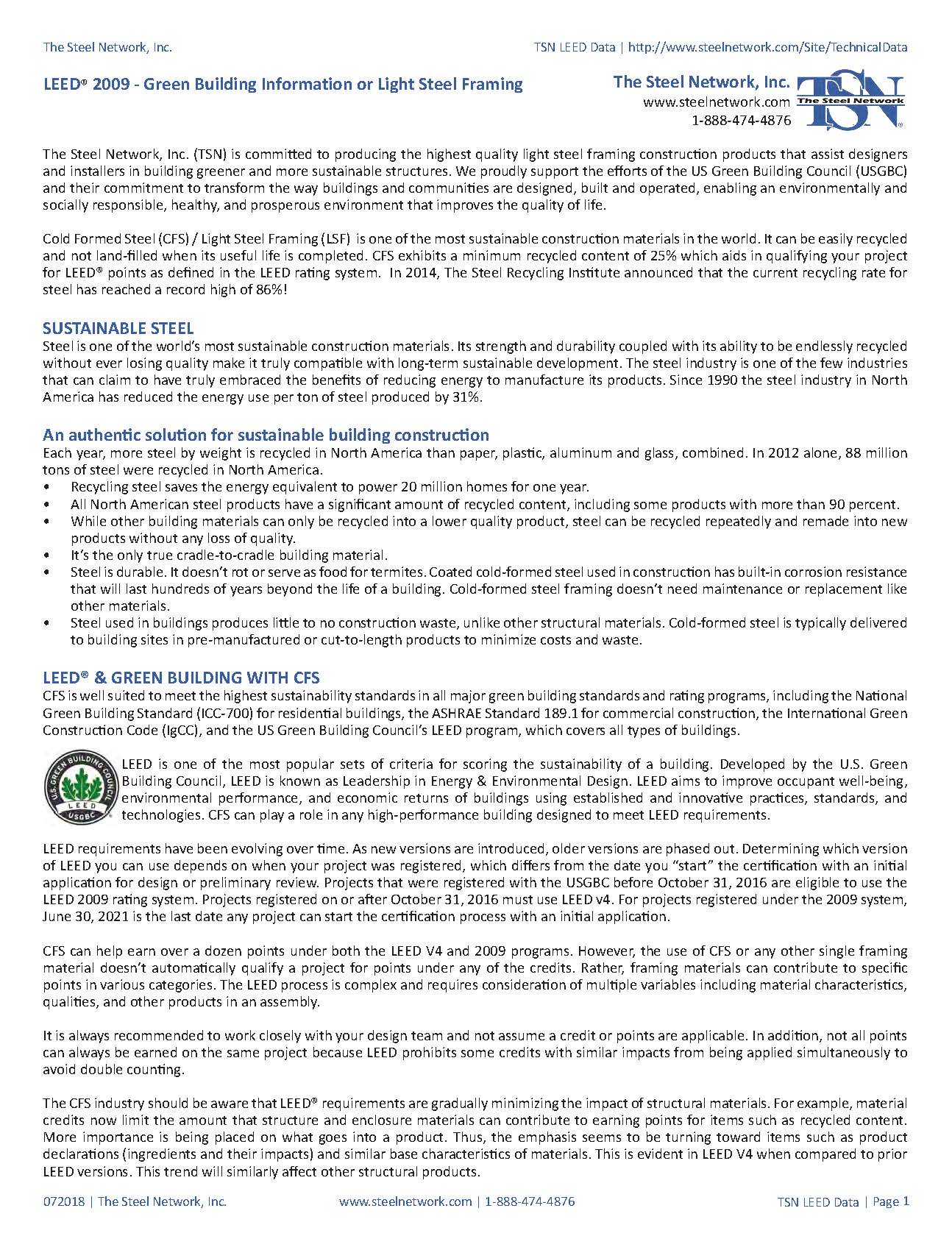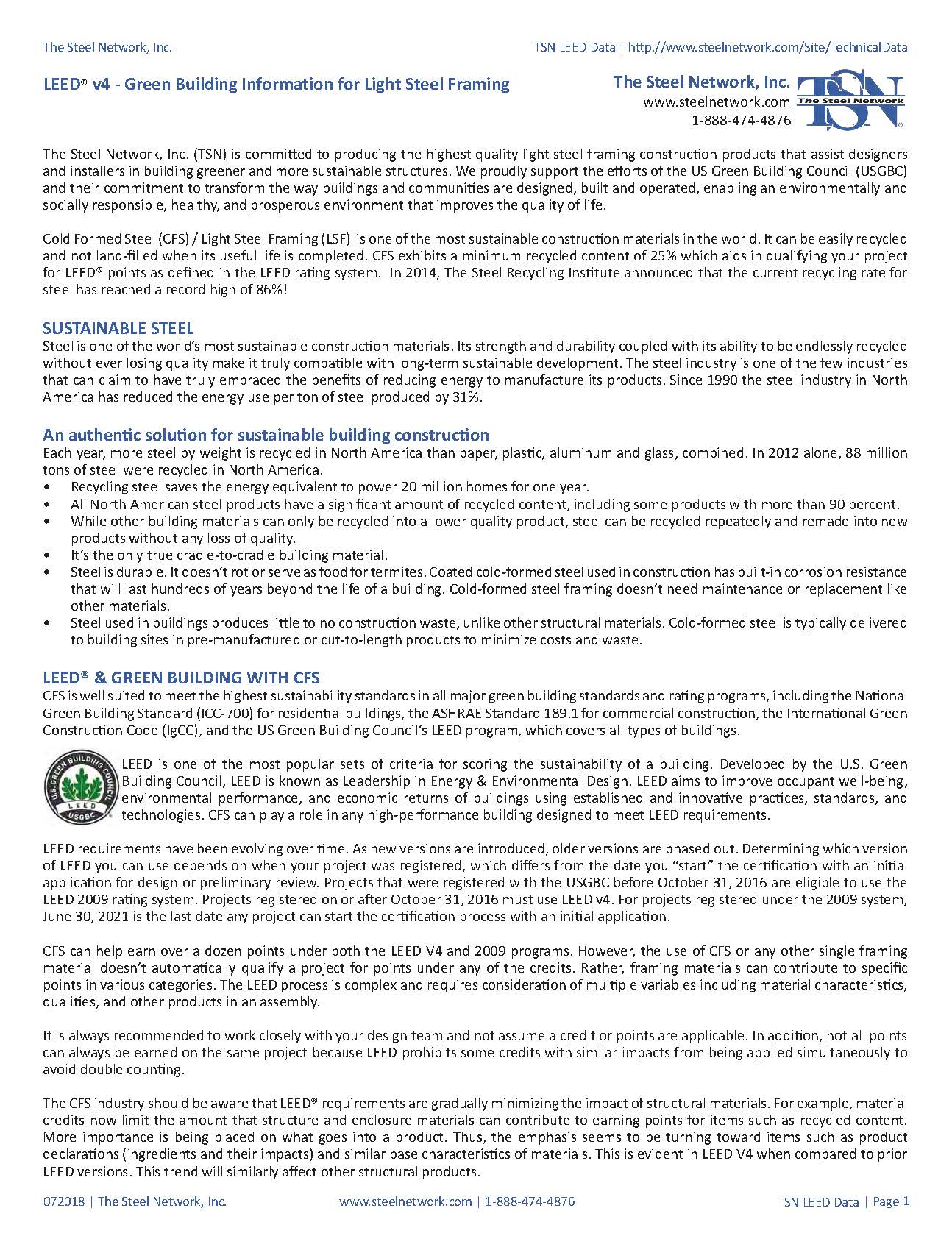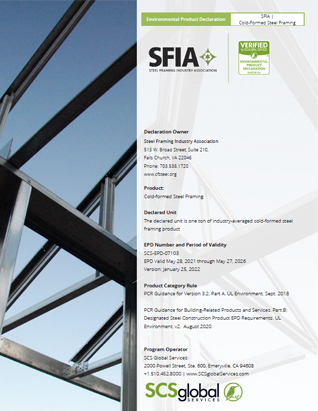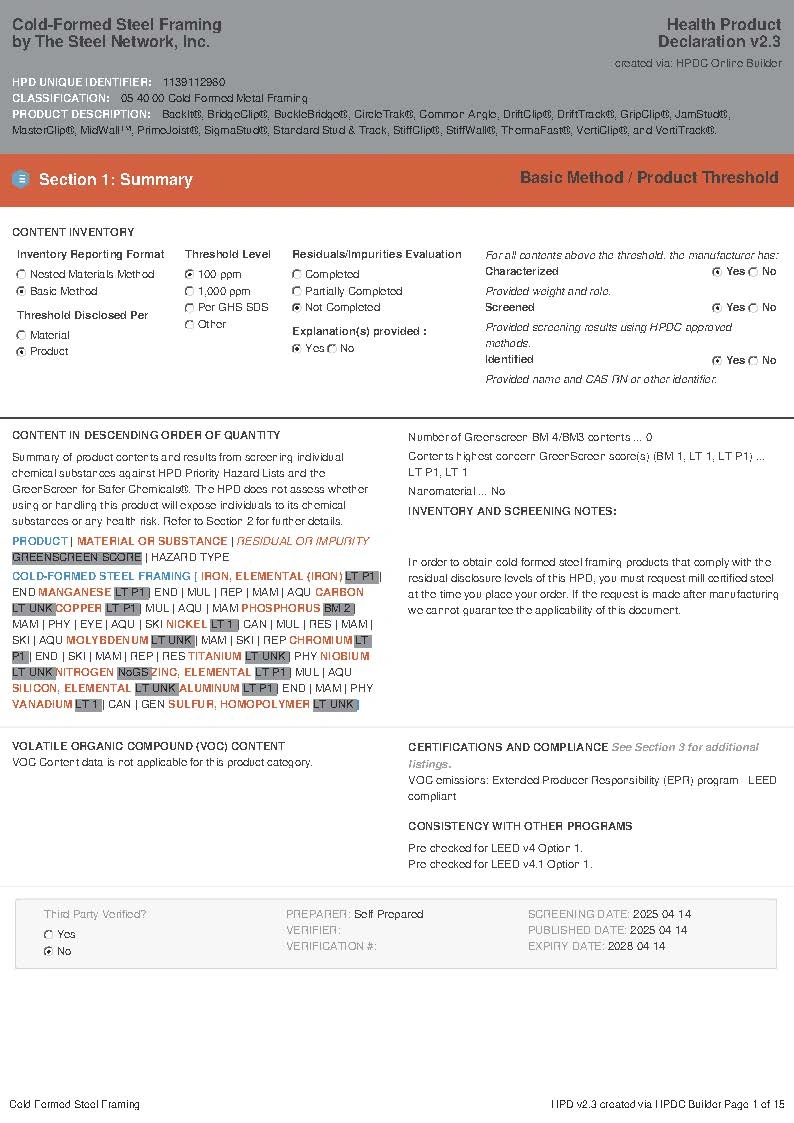The Steel Network, Inc. (TSN) is committed to producing the highest quality light steel framing construction products that assist designers and installers in building greener and more sustainable structures. We proudly support the efforts of the US Green Building Council (USGBC) and their commitment to transform the way buildings and communities are designed, built and operated, enabling an environmentally and socially responsible, healthy, and prosperous environment that improves the quality of life.
Cold Formed Steel (CFS) / Light Steel Framing (LSF) is one of the most sustainable construction materials in the world. It can be easily recycled and not land-filled when its useful life is completed. CFS exhibits a minimum recycled content of 25% which aids in qualifying your project for LEED® points as defined in the LEED rating system. In 2014, The Steel Recycling Institute announced that the current recycling rate for steel has reached a record high of 86%!
Download TSN LEED Data for 2009 & V4:
LEED® & Green Building with CFS
LEED is one of the most popular sets of criteria for scoring the sustainability of a building. Developed by the U.S. Green Building Council, LEED is known as Leadership in Energy & Environmental Design. LEED aims to improve occupant well‐being, environmental performance, and economic returns of buildings using established and innovative practices, standards, and technologies. CFS can play a role in any high‐performance building designed to meet LEED requirements.
LEED requirements have been evolving over time. As new versions are introduced, older versions are phased out. Determining which version of LEED you can use depends on when your project was registered, which differs from the date you “start” the certification with an initial application for design or preliminary review. Projects that were registered with the USGBC before October 31, 2016 are eligible to use the LEED 2009 rating system. Projects registered on or after October 31, 2016 must use LEED v4. For projects registered under the 2009 system, June 30, 2021 is the last date any project can start the certification process with an initial application.
CFS can help earn over a dozen points under both the LEED V4 and 2009 programs. However, the use of CFS or any other single framing material doesn’t automatically qualify a project for points under any of the credits. Rather, framing materials can contribute to specific points in various categories. The LEED process is complex and requires consideration of multiple variables including material characteristics, qualities, and other products in an assembly.
It is always recommended to work closely with your design team and not assume a credit or points are applicable. In addition, not all points can always be earned on the same project because LEED prohibits some credits with similar impacts from being applied simultaneously to avoid double counting.
The CFS industry should be aware that LEED® requirements are gradually minimizing the impact of structural materials. For example, material credits now limit the amount that structure and enclosure materials can contribute to earning points for items such as recycled content. More importance is being placed on what goes into a product. Thus, the emphasis seems to be turning toward items such as product declarations (ingredients and their impacts) and similar base characteristics of materials. This is evident in LEED V4 when compared to prior LEED versions. This trend will similarly affect other structural products.
Follow us on Social Media





